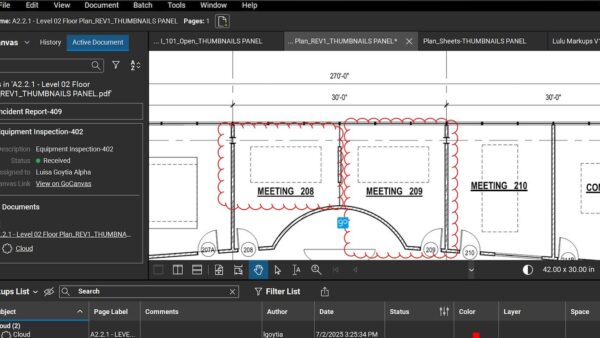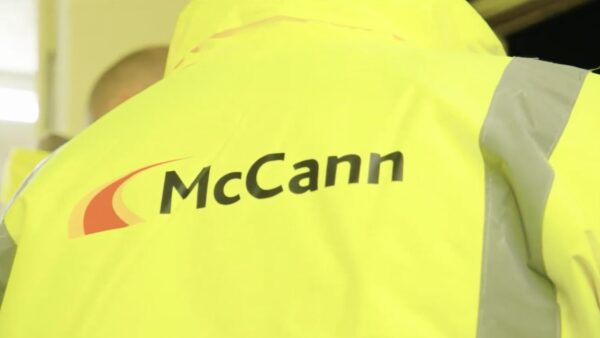Owners and FMs must work out the role they will play in the digitally-built future of Britain, says Michael McCullen, chairman of BIM software developer Sitedesk.
This should be a year that sees construction players shake off final doubts about BIM. Most contractors have embraced BIM and many are winning work and securing business benefits.
However, we often forget that the aim of BIM is to unlock the significant downstream benefits for building owners, FMs and occupants. As the first short public sector contracts awarded with mandatory BIM end, we must turn our attention to them.
Although many designers and contractors have started to gain the tangible benefit of winning work where BIM was specified, many also see BIM as creating an extra cost to collate, manage and deliver additional information to clients.
The more enlightened recognise that BIM at least replaces the outdated and disorganised way of producing handover documentation for clients, and appreciate the improved client and supply chain communications hat 3D models enable.
Clients, in my experience, have had a relatively passive role in BIM. Their main task has been to stipulate its use and specify the information they want, in the form of an EIR (Employer’s Information Requirements) document. FMs, although largely agreed on potential benefits, have also played little active role and rarely received BIM-type data.
That is about to change. As initial projects complete, clients anticipate receiving a marvellous set of 3D and building information, streets ahead of past handovers. FMs await fat data files with the complete building information they want. What could go wrong?
Discovering data difficulties
Clients may ask consultants to assist with EIRs, or turn to contractors to learn what information they should expect and in what format, COBie being the default. There is a BSI COBie standard so it should be simple… but, as some clients have found, things can go wrong at completion.
First, they discover a legal issue around data ownership. Their contract stipulated BIM, so clients assume they are entitled to the as-built BIM data – but the contractor claims ownership. They must purchase data rights or come to another arrangement.
Next, they receive handover data as a COBie spreadsheet – containing no 3D data. They consider this a partial handover – yet the BIM standard specifies no more. COBie cannot hold 3D information, so they must discuss how to obtain 3D models and what platforms make them usable.
Third, when clients pass COBie files to FM providers, they find FM systems cannot import data properly. CAFM systems were not designed to receive BIM data, are unlikely to include the functionality to extract business benefit or easily deliver the vision of complete, current, flexible and actionable building insight.
Data difficulties can be overcome, and BIM can deliver more manageable buildings. But everyone must work together early, to ensure that the openness and collaboration espoused by BIM are reflected in contracts. It’s time for clients and FMs to step up on BIM.
Defining data
Instead of reacting when BIM handovers disappoint, owners and FMs must work out the role they will play in the digitally-built future of Britain.
Experience with early BIM projects should incentivise clients to take responsibility to decide what data is required and ensure necessary contractual frameworks are in place to get it at the right time, and in the right format, for meaningful operational cost savings to be made.
They must work with advisers and FM teams to precisely define the data that makes ongoing building management more efficient. That needs expert FM insight, to identify and analyse costly line items from an O&M perspective.
Access to a well-thought-out set of BIM data will also create FM business opportunities including:
- A more strategic role for FM. Capitalising on the value of BIM data by importing this into CAFM systems, together with smart monitoring of buildings brought to life via 3D visualisation, could result in huge operational costs savings giving FM a seat, or at least a voice, at the top table.
- A foundation for new types of building services, including building performance management. Identifying major operational cost areas and ensuring these are effectively monitored and managed in a CAFM system – for example overlying energy consumption for heating and lighting with levels of occupation and adjusting these in real time.
- New operational efficiencies. Using IoT technology to effect a step-change for FM to focus on more than maintenance; driving instead for operational efficiencies based not only on historical data but on real-time information from sensors.
Better specification of BIM data is a key that will unlock the door to a wealth of opportunities for clients, facilities management teams and service providers to become major contributors to an improved bottom line for everyone.
Main image: Sophie Martin/Dreamstime.com

The more enlightened recognise that BIM at least replaces the outdated and disorganised way of producing handover documentation for clients, and appreciate the improved client and supply chain communications hat 3D models enable.– Michael McCullen, Sitedesk














